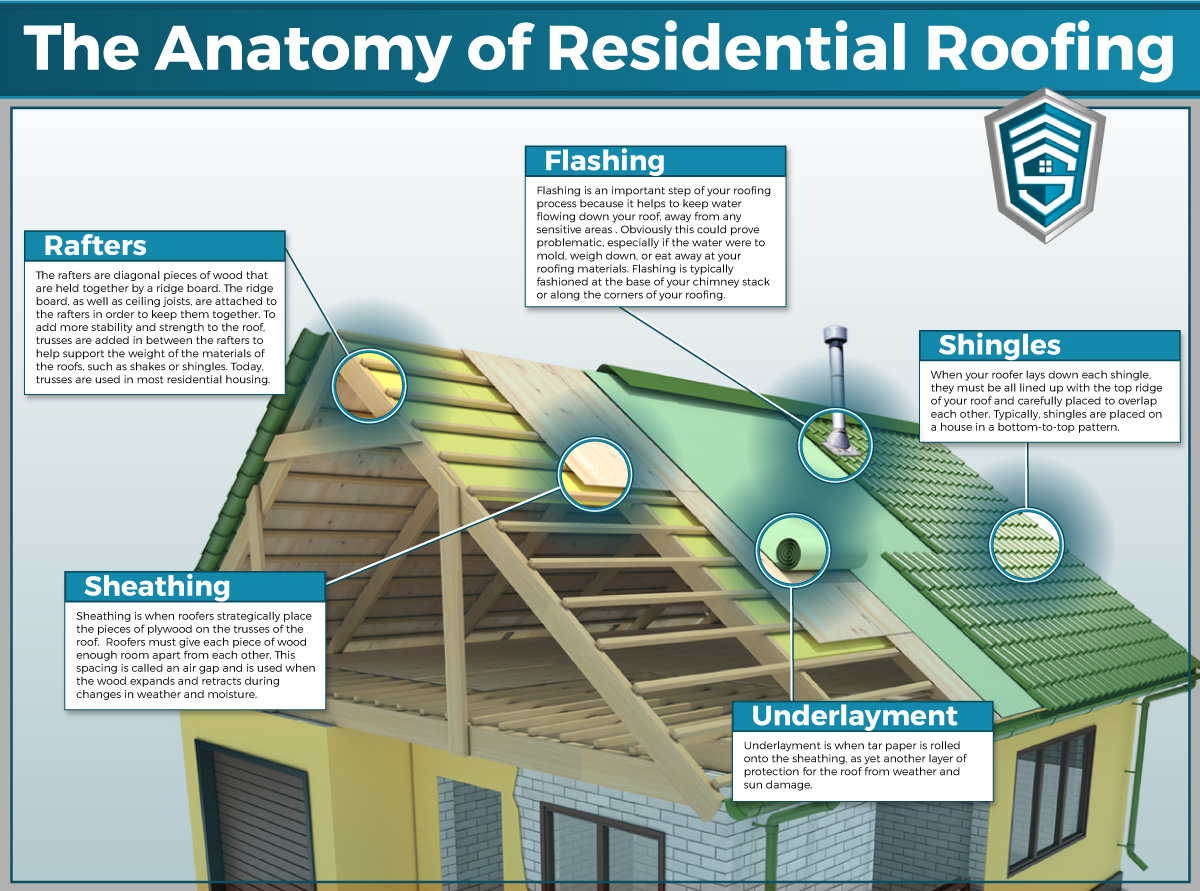The Feature Of Roof Covering Air Flow In Making Sure A Successful Installment
The Feature Of Roof Covering Air Flow In Making Sure A Successful Installment
Blog Article
Article Author-Thorpe Ploug
When you're dealing with a roof task, you may not assume much concerning roof covering air flow, yet it's more important than you recognize. Efficient ventilation assists regulate temperature and moisture in your attic, preventing troubles like mold and structural damage. By comprehending exactly how to make and set up a balanced air flow system, you can improve power performance and extend the life-span of your roof products. So, what are the essential aspects to take into consideration throughout setup that can make all the difference?
Value of Roofing System Ventilation
Roof covering ventilation plays an essential role in maintaining the overall health of your home. By permitting https://www.wqad.com/article/news/local/drone/8-in-the-air/davenport-woman-signs-40000-contract-after-she-says-a-qc-area-roofing-company-scammed-her/526-2e25c866-3a14-4727-a235-f8c172b770d1 to distribute via your attic, it aids regulate temperature level and moisture levels. just click the following internet site is essential to protect against heat buildup during hot months, which can cause raised energy prices as your cooling works overtime.
Additionally, appropriate air flow considerably minimizes the threat of moisture-related concerns like mold and mildew and mildew. If moisture levels increase, your home's structural honesty can be endangered, leading to expensive repairs. You would not intend to deal with deteriorating wood or deformed roof covering products, right?
In addition, appropriate air flow expands the life-span of your roofing system. When heat and moisture are kept in check, your roof can perform ideally, protecting against early damage. This indicates less frustrations and costs down the line.
Exactly How Roof Ventilation Functions
Reliable roofing system air flow depends on the all-natural activity of air to produce an equilibrium between consumption and exhaust. When you set up vents, you're essentially permitting fresh air to enter your attic while making it possible for warm, stale air to run away. This process helps manage temperature level and dampness levels, protecting against concerns like mold and mildew development and roofing system damages.
Consumption vents, commonly located at the eaves, pull in cool air from outdoors. Meanwhile, exhaust vents, situated near the ridge of the roof covering, allow hot air rise and departure. The distinction in temperature develops a natural air flow, referred to as the stack impact. As warm air rises, it creates a vacuum cleaner that pulls in cooler air from the reduced vents.
To maximize this system, you require to make certain that the intake and exhaust vents are effectively sized and positioned. If the intake is limited, you won't accomplish the preferred ventilation.
Likewise, not enough exhaust can trap warmth and moisture, bring about possible damage.
Secret Setup Considerations
When installing roof air flow, numerous crucial factors to consider can make or break your system's efficiency. First, you require to analyze your roof covering's layout. The pitch, form, and materials all affect air movement and air flow selection. See to it to select vents that match your roofing system type and neighborhood climate problems.
Next, think about the positioning of your vents. Preferably, you'll desire a balanced system with consumption and exhaust vents placed for optimum air movement. Place consumption vents low on the roofing system and exhaust vents near the optimal to motivate an all-natural circulation of air. This configuration aids avoid dampness buildup and promotes power efficiency.
Do not ignore insulation. Correct insulation in your attic avoids warm from running away and maintains your home comfortable. Make sure that insulation does not block your vents, as this can hinder air flow.
Finally, think of maintenance. Select air flow systems that are simple to gain access to for cleaning and evaluation. Regular upkeep ensures your system remains to operate successfully over time.
Final thought
To conclude, roofing ventilation is essential for an effective installation. By guaranteeing appropriate air movement, you can avoid warm accumulation and moisture concerns that cause costly damage. When you strategically setting intake and exhaust vents, you improve power effectiveness and extend the life expectancy of your roof covering. Keep in mind, a well-ventilated roof covering not just secures your investment yet also improves your interior air high quality. So, prioritize ventilation to ensure a durable and cost-efficient roof for your home.
